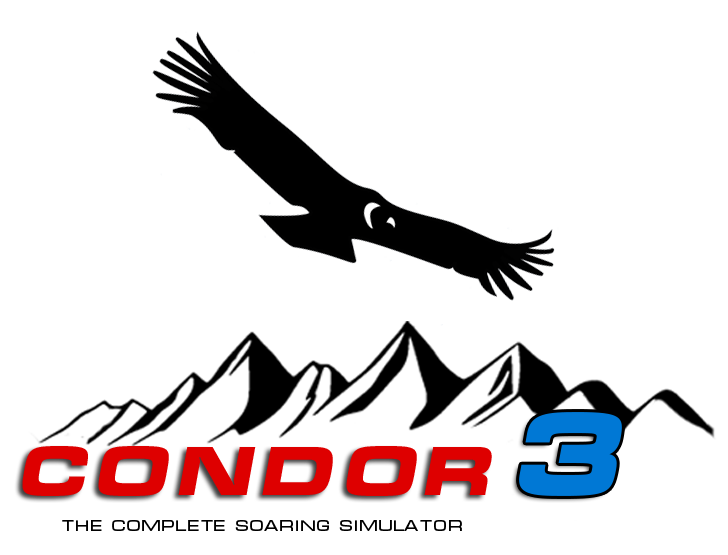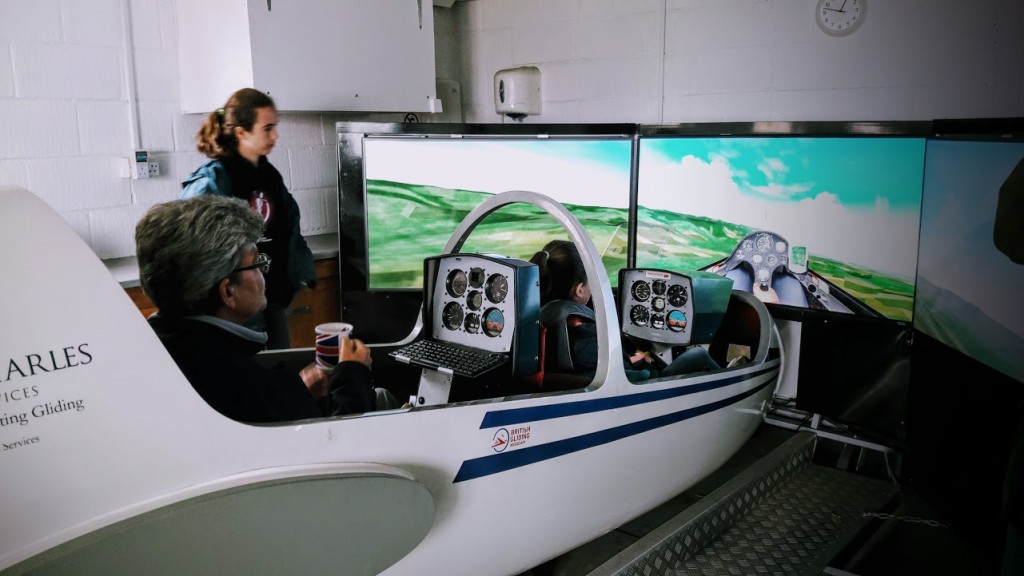Condor3 - Flight School, Soaring & Racing
Condor3

Flight School
Since the beginning, Condor has been used by clubs and businesses to construct full size simulators as shown in the picture opposite. That one is the British Gliding Association simulator, and they rent it out to their member clubs for a small fee. But that is not the only way. Condor has a comprehensive set of training lessons built in, and anyone can teach themselves how to fly in the comfort of their own home on almost any PC with a joystick. We have many stories of this from our community.

The lessons are split into 4 phases:
- Basic
- Preflight Check
- Effects of Commands
- Turns
- Winch Launching
- Aerotow launching
- Traffic pattern(circuit) and landing
- Winch launch failure
- Intermediate
- Thermal Soaring
- Ridge Soaring
- Wave Soaring
- Upslope Winds
- Advanced
- Starting task and navigation
- Speed-To-Fly - MacCready Theory
- Final Glide
- Acro
Soaring
Ridge and slope lift
| Hills, ridges and mountains produce rising air in a number of ways and they are all realistically simulated in Condor. Wind blowing on a hill and being deflected upwards sounds quite simple, but there are many effects Condor also takes into account. The strength of lift varies with distance from the slope, wind strength, altitude, height above the valley, and angle between the ridge axis and the wind. Bowls and gullies in the ridge channel the air and give improved lift. The area of best lift moves upwind as you approach the crest of the hill, and the wind speed increases over the top. Behind the ridge the air descends in a turbulent area of sink. Slopes facing the sun have increased heating, and this gives rise to upslope winds which can also be soared.
|
Thermal

| Thermals in Condor are triggered by hot areas on the ground like fields, villages or slopes facing the sun. They have roughly round cross-sections with diameters from 100 to 500 meters. They can have a cumulus cloud at the condensation level, or be completely cloudless “blue” thermals. When the reservoir of warm air at the ground is exhausted, the lift starts to weaken and finally the cloud dissipates and the cold air starts sinking. In windy conditions the thermals are inclined because of the change of wind strength with height and are moving with the wind at the same time. Some thermal are created by a fixed source, such as a sunny slope, and there do not travel with the wind, and are sharply inclined in the downwind direction. If the wind is strong enough, and you enabled the setting in the Condor weather setting page, they will form long streets aligned with the wind direction.
|
Wave

| Lee waves can be made in Condor with the appropriate settings on the weather page. The strength of the wave, the wavelength and the visibility of the lenticularis clouds are controlled by setting the wind speed, the airmass stability, and the airmass moisture content.
Using the weather controls in Condor its possible to have all three types of lift available in one flight. This can make the selection of the best strategy for cross country flying quite challenging, but also a lot of fun.
|
Racing

| Its great flying Condor in single player mode, and some amazing flights can be made. But the most fun in Condor is joining a multiplayer flight and racing. Having the other competitors around you in the air is exhilarating. There are many online competitions to join running 24/7. see the Serverlist Here for races running right now. You can of course create your own races for you and your friends, and run them on a private network or online and advertised in the serverlist for anyone to join. Races follow standard real world race formats and classes. Starts can be pilot selected, or GP “regatta” type. Condor has scoring built in, so at the end of the race its clear who was the winner. |
There are no products to list in this category.






